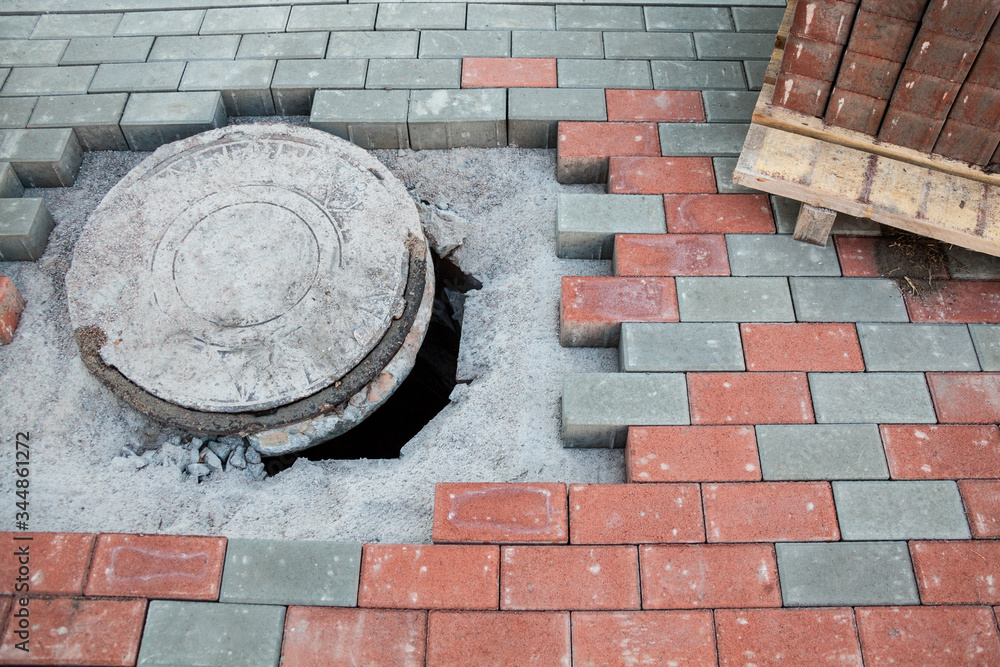Paverstone maintenance is crucial for ensuring your outdoor surfaces stay durable and attractive. Yet, many homeowners unknowingly make common mistakes that lead to damage and reduced lifespan. Discover the most frequent paverstone maintenance errors and learn how to avoid them to keep your driveways, patios, and walkways looking their best for years to come. This guide will walk you through what these mistakes are and how to maintain your paverstones properly.
Failure to Clean Your Paverstones Regularly
This is one of the most common mistakes: not properly cleaning your paverstones on a regular basis. Silt, leaves, and other debris could accumulate in the joints and therefore promote weed growth and staining.
How to Avoid It:
Regular sweeping of your paverstones and, of course, periodic power washing at least once per year in order to keep the surface clean and eventually prevent stubborn stains from embedding will more than suffice.
Using the Wrong Cleaning Products
Strong chemicals, like bleach or acid-based cleaners, will readily damage your pavers, leaving them discolored and eroded. Even household detergents are not friendly with detergents if those detergents create residues for more dirt.
How to Avoid Them:
Always go for cleaning solutions tailored to pavers or mild, eco-friendly detergents. Before using any cleaner on the entire surface, it is important to test such a cleaner in a hidden small spot.
Weeds, moss, and grass quickly sprout within the paverstone joints if not checked. Over time, these cause the pavers to shift, making the surface uneven.
Avoidance:
Regularly check your paverstone areas for any undesirable growth of weeds. Remove weeds upon appearance and apply a joint stabilizing sealer or polymeric sand to avoid future growth.
Failure to Seal the Pavers
Sealing pavers is usually one of the most-forgotten maintenance routines. The sealers help to prevent the stones from getting stained, damage by water, and fading due to ultraviolet rays. They also help stabilize the joint sand.
How to Avoid It:
Use a good quality sealer every 2-3 years, depending on the climatic conditions and foot or vehicular wear. When sealing, the surface must be clean and dry. Apply sealing in the shade and not on hot days to avoid streaking.
Ignoring Drainage Problems
Pavers with poor drainage are prone to water pooling, causing erosion, shifting, and may someday sink. If you get to see so much standing water after the rains, then something is wrong, and you need to correct it with the urgency required.
How to Prevent This:
Maintain a proper drainage system in your paver stone installation. Water pooling should be checked frequently, and any deficiency solved immediately with re-grading or adding extra drainage solutions.
Neglecting Joint Sand Renewal
Through time, joint sand between the paver stones may wear because of wind, rain, and normal cleaning. When the sand is not replaced regularly, the pavers are not stabilized.
How to Prevent it:
Re-inspect the joints every few months and refill with more polymeric sand as needed. This not only secures the pavers in place but also helps to reduce weed growth and increases water drainage.
Using Too Much Pressure While Cleaning
It is ideal to use pressure washing in cleaning pavers, but the equipment can wear out the surface if pressure is exaggeratedly high, especially with old pavers or those made of delicate materials.
How to Prevent It:
Use a pressure washer set between low and medium pressure with a wider spray nozzle. You should hold the nozzle far enough from the surface and never concentrate on one section for too long.
Procrastination of Your Repairs
Small cracks, loose pavers, or slight shifts are really not that big of a deal, but putting off repairs only lets the issue get worse literally with each passing day. Broken pavers spread the problem to neighboring areas, resulting in costly fixes.
How to Avoid It:
Address any repairs as soon as you notice them. Whether it’s a replacement of a broken paver, re-leveling sunken areas, or fixing cracks, the prompt attention will save you more significant repairs down the line.
Conclusion
Proper paverstone maintenance takes regular attention using appropriate techniques and detailing, coupled with warm care. By regular attention to these and other common mistakes, and following the best practices and techniques listed above, your paver stone surfaces should give you many years of beautiful service. Remember that a little maintenance time now can save you from big repair bills later!

